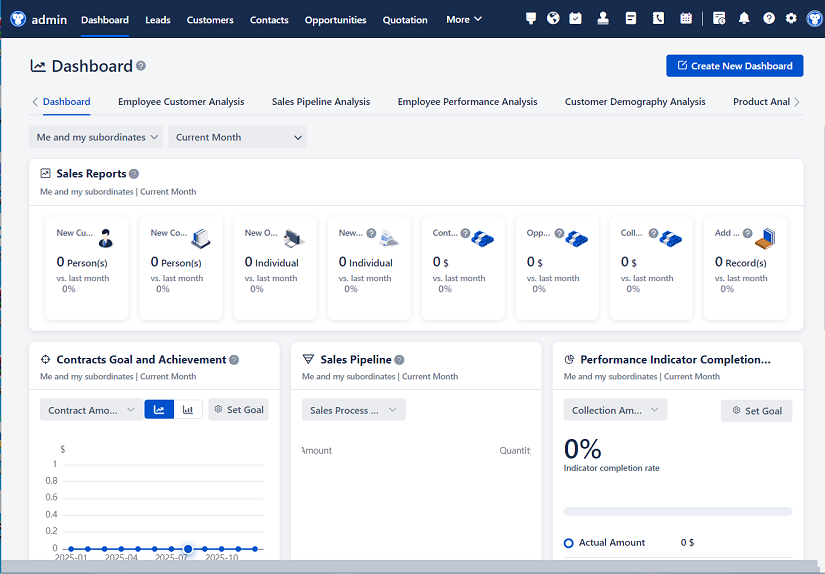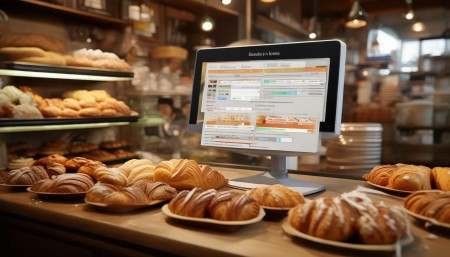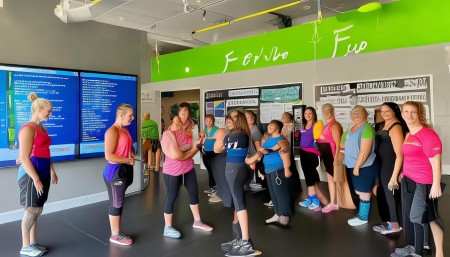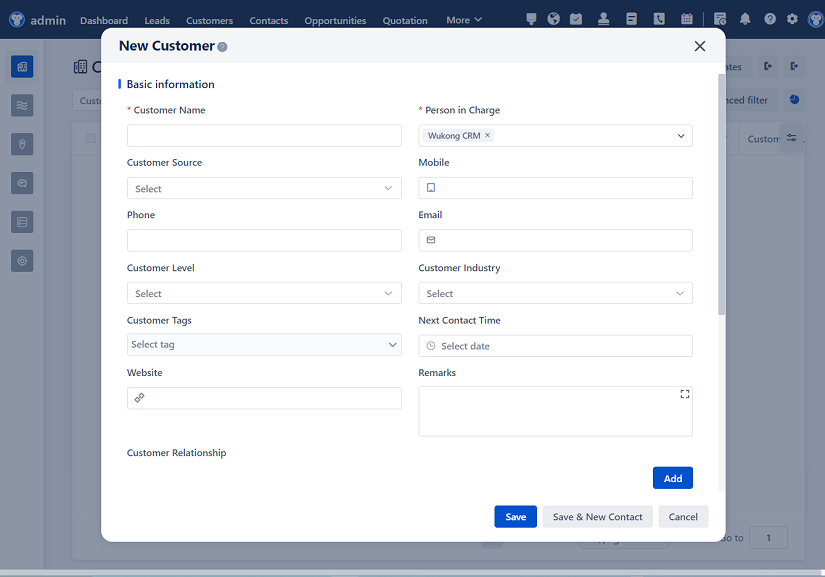
△Click on the top right corner to try Wukong CRM for free
Sure, here’s a 2000-word article on CRM case studies, written in a conversational tone. I'll also add some self-reflective questions at the end.
Hey there! So, you’re interested in CRM (Customer Relationship Management) and how it can really make a difference for businesses, right? Well, you’ve come to the right place. Let me tell you, CRM is not just about software; it's about building better relationships with your customers. And what better way to understand its impact than through some real-life examples? Let’s dive into a few CRM case studies that show just how powerful this tool can be.
First up, let’s talk about a company called Zappos. You might know them as an online shoe and clothing retailer, but they’re also famous for their incredible customer service. Now, imagine trying to keep track of all those customer interactions—emails, calls, social media messages, and more. It sounds like a nightmare, doesn’t it? But Zappos managed to do it, and they did it well. They used a CRM system to centralize all their customer data, which allowed their support team to have a complete view of each customer’s history. This means that when a customer called in, the support agent could see everything from previous purchases to past interactions. It made the whole experience so much smoother and more personalized. And you know what? Customers loved it. They felt valued and understood, and that’s exactly what good CRM is all about.

Now, let’s switch gears and talk about a B2B company, Salesforce. Yes, the very same Salesforce that provides CRM solutions. But even they need to use CRM to manage their own business, right? Absolutely. Salesforce uses their own platform to manage their sales pipeline, customer interactions, and even internal communications. One of the coolest things they did was integrate their CRM with other tools like marketing automation and analytics. This integration allowed them to get a 360-degree view of their customers, from the first touchpoint to the final sale. It’s like having a superpower where you can see everything that’s happening with your customers in real-time. And guess what? It worked wonders. Their sales team was more efficient, and they were able to close deals faster. Plus, they could tailor their marketing efforts to be more relevant and effective. It’s a win-win situation, and it shows how CRM can be a game-changer for any business, big or small.
But CRM isn’t just for big companies. Small businesses can benefit from it too. Take, for example, a local bakery called Sweet Treats. They started using a CRM system to manage their customer database, and it completely transformed their business. Before, they were using spreadsheets and sticky notes to keep track of orders and customer preferences. Can you imagine the chaos? With CRM, they could easily store and access all that information. They could see which customers ordered what, how often, and even their favorite flavors. This allowed them to send personalized emails and offers, like a special discount on a customer’s birthday or a reminder about their favorite seasonal treat. The result? More repeat customers and higher customer satisfaction. It’s amazing how a little bit of organization can go a long way, isn’t it?
Another great example is a non-profit organization called Save the Children. They use CRM to manage their donor relationships, and it’s been a huge help. Non-profits rely heavily on donations, and keeping track of donors, their contributions, and their preferences can be a daunting task. But with CRM, Save the Children was able to streamline their processes. They could see who donated, how much, and when. This helped them to send out targeted thank-you messages and updates, making donors feel appreciated and connected to the cause. They also used the data to identify potential major donors and create personalized fundraising campaigns. The result? Increased donations and a stronger, more engaged donor base. It’s a perfect example of how CRM can be used beyond just traditional business settings.
Let’s not forget about the hospitality industry. A hotel chain called Hilton Worldwide has been using CRM to enhance their guest experiences. In the hospitality industry, it’s all about making guests feel welcome and comfortable. Hilton uses CRM to track guest preferences, such as room type, amenities, and even dietary restrictions. When a guest checks in, the front desk staff can see all this information and provide a personalized welcome. For example, if a guest always requests a high-floor room, the staff can make sure to accommodate that. Or if a guest has a food allergy, the restaurant can be notified to prepare a special menu. These small touches make a big difference, and guests are more likely to return and recommend the hotel to others. It’s all about creating memorable experiences, and CRM helps make that possible.
Now, let’s talk about a tech company, HubSpot. They’re known for their inbound marketing and sales software, but they also use CRM to manage their customer relationships. HubSpot’s CRM is integrated with their other tools, like email marketing and social media management. This allows them to have a seamless flow of information across different departments. For example, if a customer interacts with a social media post, the sales team can see that and follow up with a personalized message. Or if a customer opens an email, the marketing team can see that and adjust their strategy accordingly. It’s like having a crystal ball that shows you exactly what your customers are doing and how they’re engaging with your brand. And it’s not just about tracking; it’s about using that data to improve the customer experience. HubSpot has seen a significant increase in customer retention and satisfaction, and it’s all thanks to their CRM system.
One more example, and this one is a bit different. A fitness center called FitLife decided to use CRM to manage their member relationships. Fitness centers are all about community and personal connections, and CRM can help build those. FitLife used their CRM to track member attendance, workout preferences, and even goals. This allowed them to send personalized reminders and encouragement, like a “Great job on your last workout!” message or a “You’re halfway to your goal!” update. They also used the data to create targeted classes and events, like a special yoga class for members who prefer low-impact workouts. The result? Higher member engagement and retention. Members felt more connected to the gym and more motivated to reach their fitness goals. It’s a great example of how CRM can be used in a non-traditional setting to create a sense of community and support.
So, there you have it—some real-life examples of how CRM can transform businesses. From retail to B2B, from small bakeries to non-profits, and even in the hospitality and fitness industries, CRM is a powerful tool. It’s all about using data to build better relationships, and that’s something every business can benefit from.
Now, let’s wrap things up with a few questions to reflect on:
-
How can CRM help a small business like a local bakery improve its customer relationships?
- Well, CRM can help by storing and organizing customer data, allowing the bakery to send personalized offers and reminders, which can lead to more repeat customers and higher satisfaction.

-
What are some key benefits of integrating CRM with other tools like marketing automation and analytics?
- Integrating CRM with other tools gives you a 360-degree view of your customers, making it easier to tailor your marketing efforts, track customer interactions, and close deals faster.
-
How does CRM help non-profit organizations like Save the Children manage their donor relationships?
- CRM helps non-profits by tracking donor contributions and preferences, allowing them to send targeted thank-you messages and updates, and identifying potential major donors for personalized fundraising campaigns.
-
In the hospitality industry, how can CRM enhance the guest experience at a hotel like Hilton?
- CRM can track guest preferences, such as room type and dietary restrictions, allowing the hotel to provide a personalized welcome and ensure a comfortable stay, leading to higher guest satisfaction and loyalty.
-
How does a fitness center like FitLife use CRM to build a sense of community and support among its members?

- FitLife uses CRM to track member attendance, workout preferences, and goals, sending personalized reminders and encouragement, and creating targeted classes and events, which leads to higher member engagement and retention.
I hope these examples and questions give you a better understanding of how CRM can be a game-changer for any business. If you have any more questions or want to share your own CRM experiences, feel free to reach out!
Related links:
Free trial of CRM
Understand CRM system
AI CRM Systems

△Click on the top right corner to try Wukong CRM for free